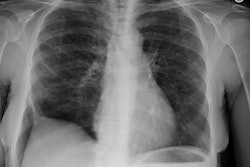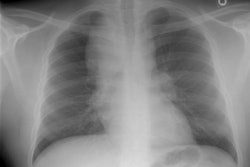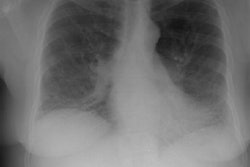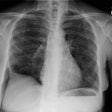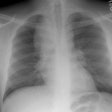Bronchiolitis obliterans organizing pneumonia manifesting as multiple large nodules or masses.
Akira M, Yamamoto S, Sakatani M
OBJECTIVE: The purpose of this study was to describe the CT features and clinical features in bronchiolitis obliterans organizing pneumonia (BOOP) that manifest as multiple large nodules or masses. MATERIALS AND METHODS: We reviewed thin-section CT scans and clinical records of 12 patients with histologically proven BOOP manifesting as multiple large nodules or masses. For all patients follow-up CT scans were available, which we also reviewed. RESULTS: Of 60 lesions found in the 12 patients, 53 (88%) had an irregular margin, 27 (45%) had an air bronchogram, 23 (38%) had a pleural tag, and 21 (35%) had spicules. Ancillary findings included focal thickening of the interlobular septa in five (42%) of the 12 patients, pleural thickening in four (33%) patients, and parenchymal bands in three (25%) patients. Follow-up CT scans showed that the lesions with surrounding ground-glass attenuation evolved into lesions with pleural tags or parenchymal bands or both. CONCLUSION: BOOP should be considered when multiple large nodular lesions are seen on chest CT. In particular, BOOP should be considered when the lesions contain air bronchograms; have irregular margins, relatively broad pleural tags in contact with the pleura, parenchymal bands, or subpleural lines; or are associated with focal thickening of interlobular septa.
